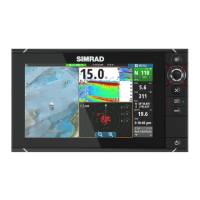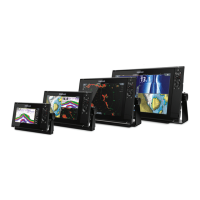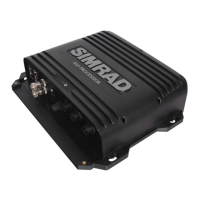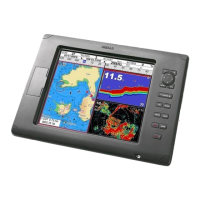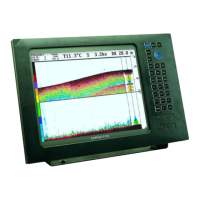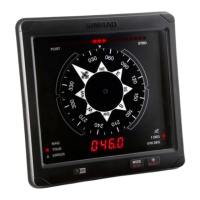• Init rudder: Defines how the system moves the rudder when switching from manual
steering to an automatic mode.
-
Rudder limit: Determines the maximum rudder movement in degrees from midship
position that the autopilot can command the rudder in the automatic modes. The
Rudder limit setting is only active during autosteering on straight courses, not during
course changes. Rudder limit does not affect Follow-up or Non-Follow-up steering.
- Off heading limit: Sets the limit for the off heading alarm. An alarm occurs when the
actual heading deviates from the set heading more than the selected limit.
• Rudder limit: Determines the maximum rudder movement in degrees from midship
position that the autopilot can command the rudder in the automatic modes. The Rudder
limit setting is only active during autosteering on straight courses, not during course
changes. Rudder limit does not affect Follow-up or Non-Follow-up steering.
• Off heading limit: Sets the limit for the off heading alarm. An alarm occurs when the actual
heading deviates from the set heading more than the selected limit.
• Track response: Defines how fast the autopilot shall respond after having registered a
cross track distance.
• Track approach angle: Defines the angle used when the vessel is approaching a leg. This
setting is used both when you start navigating and when you use track offset.
• Course change confirm angle: Defines the limits for course change to next waypoint in a
route. If the course change is more than this set limit, you are prompted to verify that the
upcoming course change is acceptable.
Sailing
Ú
Note: Sailing parameters are only available when the boat type is set to Sail.
This option allows for manually changing parameters that were set during the
commissioning of the autopilot computer. For more details of the settings, refer to the
separate documentation for the autopilot computer.
• Tack time: Controls the rate of turn (tack time) when performing a tack in wind mode.
• Tack angle: Controls the angle that the boat will tack to between 50º - 150º in Heading
hold mode.
• Wind function: Select what wind function the autopilot will use when in wind mode.
-
Auto:
If TWA is <70º, Wind mode will use AWA.
If TWA is ≥70º, Wind mode will use TWA.
- Apparent
- True
• Manual speed: If neither boat speed or SOG data is available and or deemed reliable a
manual value for speed source can be entered and used by the autopilot to aid steering
calculations.
AC70/AC80 Specific user settings
The AC70/AC80 computers do not have any specific user settings available in the MFD.
Ú
Note: The MFD cannot be used to configure or commission an AP70/AP80 system. For
more information, refer to the documentation included with the autopilot system.
Autopilot| NSS evo3S Operator Manual
105
